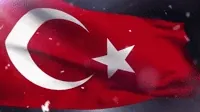Peter the Great, reigned 1682-1725
Tsar Peter I of Russia is more usually described as 'Peter the
Great'. As a young man, he travelled to Europe in 1697–98 to study new
developments in technology, especially shipbuilding. He lived in
Deptford, at the home of the writer John Evelyn, for much of his
four-month stay in England.
Although officially meant to be travelling incognito, most people
seemed to know Peter's identity. At a height of six feet seven, it would
have been hard for him to blend into a crowd!
How did Peter inherit the throne of Russia?
 Born on May 30 1672, Peter was named Peter Alexowitz, meaning 'Peter
the son of Alexis'. His father, Tsar Alexis, had married twice, and
Peter was the first child of his second marriage. There were already six
daughters and two rather unhealthy sons, named Feodor and Ivan, from
the first marriage. When Alexis died very suddenly in 1676, Feodor ruled
until his own death in 1682, when the ten year-old Peter became tsar
jointly with his half-brother Ivan. At first Peter's older half-sister
Sophia held power as regent, but in 1696 he began to rule alone.
Born on May 30 1672, Peter was named Peter Alexowitz, meaning 'Peter
the son of Alexis'. His father, Tsar Alexis, had married twice, and
Peter was the first child of his second marriage. There were already six
daughters and two rather unhealthy sons, named Feodor and Ivan, from
the first marriage. When Alexis died very suddenly in 1676, Feodor ruled
until his own death in 1682, when the ten year-old Peter became tsar
jointly with his half-brother Ivan. At first Peter's older half-sister
Sophia held power as regent, but in 1696 he began to rule alone.What were Peter's interests?
From childhood, he liked to invent complicated games involving
pretend warfare. In 1683, on his eleventh birthday, he was allowed to
have some real guns, and found various young men and boys to come and
make up mock regiments with him. Some years later, 24 people were killed
during one of his 'play' battles! Peter was also interested in
practical activities such as carpentry, and sailing and building ships.
In his first years as tsar, he was not very interested in government and
stayed away from Moscow, the capital city of Russia.
What was Russia like at the time when Peter became tsar?
Russia was a huge landlocked country, much less developed than other
countries in Europe. At war with either Turkey or Sweden for most of his
reign, Peter took a particular interest in ships and arms. He wanted
Russia to be able to compete with European countries in war and
technology. During his trip to western Europe, he looked for ideas from
countries like Holland and England, which already had strong navies.
Why was Peter's journey to Europe considered unusual?
Though there had been contact with western Europe for more than 100 years, no other tsar had left Russia in peace-time before.
What did he hope to learn?
He hoped to investigate and learn about all types of technology and
science, especially the latest techniques of shipbuilding and
seamanship, particularly navigation. He also wanted to study the way
navies were organised, and recruit specialists to travel home with him.
If they advised and trained others, Russia too could have a strong navy.
Why was William III, the king of England, happy to help Peter?
William welcomed the opportunity to increase trade with Russia, so
gave Peter every assistance he could. By impressing the Tsar, he hoped
to win back some of the privileges English merchants had enjoyed in
earlier times. The King was especially keen to sell tobacco, grown in
the British colony of Virginia, to Russia. During Peter's stay in
England, a group of London merchants and financiers gave him thousands
of pounds for the right to import tobacco into Russia.
What raw materials could Russia trade with other countries?
Russia had plenty of pitch, potash, tallow, leather, grain and furs.
By travelling through Russia, European merchants also hoped to be able
to join in the lucrative eastern luxury trade in silk and spices.
Which countries did Peter visit when he came to western Europe?
 He
passed through the German states before visiting Holland, where in 1697
he worked for a time as a carpenter. In 1698 he travelled to England
and stayed at a house in Deptford belonging to the writer and diarist,
John Evelyn. The house, Sayes Court, suited Peter well because it
removed him from crowded London. Large and beautifully furnished, it was
close to the dockyards, where Peter could easily visit ships being
built. He was especially keen to study the drawing of ship plans.
He
passed through the German states before visiting Holland, where in 1697
he worked for a time as a carpenter. In 1698 he travelled to England
and stayed at a house in Deptford belonging to the writer and diarist,
John Evelyn. The house, Sayes Court, suited Peter well because it
removed him from crowded London. Large and beautifully furnished, it was
close to the dockyards, where Peter could easily visit ships being
built. He was especially keen to study the drawing of ship plans.Were Peter and his companions good tenants?
No! During their stay they caused a great deal of damage, and Evelyn
was extremely unhappy. His estate steward reported that Peter's party,
which was full of 'right nasty' people, had wrecked the house and
garden. Carpets were left filthy with grease and ink, and many paintings
looked as if they had been used for shooting targets. Locks and windows
were broken, and every one of the 50 chairs in the house had vanished,
probably burned on fires!
A very keen gardener, Evelyn was appalled by damage to his prized
holly hedges, lovingly cared for over a 20 year period. Apparently Peter
and his friends had played a riotous game which involved pushing each
other through the hedges in wheelbarrows! The King's Surveyor, Sir
Christopher Wren was ordered to report on the damage, and recommended
that Evelyn be paid £350 in compensation, a huge sum in the 17th
century.
What other places did Peter visit?
Peter was interested in astronomy because of its link with
navigation, so visited the Royal Observatory at Greenwich, observing
Venus with the first Astronomer Royal, Flamsteed. Here too, the Tsar and
his group broke several items!
Fascinated by all things scientific, Peter also visited the Royal
Society. He was interested in coinage too, so visited the Tower of
London to view the Royal Mint. While at the Tower, Peter was not shown
the axe used to behead King Charles I, as it was feared he might throw
it into the river! Peter remembered how angry the execution had made his
father. Peter visited many other places during his stay, including a
Friends' Meeting House in Deptford, where he discussed religion with the
Quaker William Penn on several occasions.
How did King William help Peter?
He
ordered the Admiralty to allow Peter the use of several small yachts.
More importantly, he also presented Peter with the ship Royal Transport
as a gift. Used to carry important passengers to Holland and back, it
was one of the king's most modern ships, with an experimental design and
rig. The ship was altered and refitted, and given extra golden carved
decorations to suit Peter better. Peter discovered that the ship's
designer, Peregrine Osborne, Marquis of Carmarthen, enjoyed drinking as
heavily as he did himself, and the two became good friends.
How well did Peter look after the boats he used during his visit?
He damaged several of them. He liked to take the helm himself, and
while steering, ran into other vessels. In one such collision all the
joints of the other ship were shaken, loosening the caulking between the
planks. While visiting Woolwich Dockyard, another mishap led to a bill
for 15 shillings, this time for anchor-cable cut and lost by Peter. King
William himself paid for all the repairs these various incidents
created.
Was Peter's visit a success?
Yes. Technology from western Europe proved very important in the
development of an efficient Russian navy. Peter learnt a lot from his
visits to the Deptford dockyards, where ships for the East India Company
were built. When he returned to Russia, a large shipbuilding industry
was established. In 1703, a fleet was founded in the Baltic Sea, and by
the end of Peter's reign 28,000 men were serving there, on 49 ships and
800 smaller vessels. In the early years of the fleet, many Britons
built, maintained, and served on these Russian ships.
About 60 specialists from England had agreed to travel back with the
Tsar after his 'Great Embassy'. These included master shipbuilders and
assistants, mast-makers, riggers, joiners, anchor-makers, captains,
pilots, gunners and engineers. Many of them found it difficult to get
permission to return home once they were in Russia!
Over the next 100 years, Britain continued to provide many
high-ranking officers for the Russian navy. Sailors from Russia also
trained on British ships in both the Royal and Merchant Navies. Peter's
innovations paved the way for further developments during the reign of
Catherine the Great, his grandson's wife. Before Peter became Tsar,
Russia had no navy at all. After his reign, Russian industry and armed
forces were completely reorganised, and the country became a successful
naval power.
How did Peter the Great die?
In November 1724 he leapt into freezing water and worked throughout
the night, to assist in the rescue of 20 sailors whose ship had been
grounded. The resulting fever helped lead to his death early in 1725.
Some of the main events in Peter the Great's life
| 1672 | Peter the Great is born. | ||||
| 1676 | Peter's father, Tsar Alexis dies, and Peter's half-brother Feodor becomes Tsar. | ||||
| 1682 | Feodor dies and Sophia becomes regent on behalf of her younger half-brothers. | ||||
| 1688 | Peter begins his first attempts at shipbuilding, on a lake. | ||||
| 1689 | Peter marries Evdokia Lopukhina, his first wife. | ||||
| 1693 | Peter sees the sea for the first time. His passion for ships and sailing is to last throughout his life. | ||||
| 1696 | Ivan, Peter's half-brother dies. Peter begins to build up a navy. | ||||
| 1697–98 | Peter leads his Great Embassy to western Europe, visiting the Netherlands, Vienna and England. | ||||
| 1703 | Peter orders the building of a new city to be named St. Petersburg. | ||||
| 1707 | Peter marries Catherine, his second wife privately. The marriage to his first wife, banished to become a nun, is declared null and void. | ||||
| 1717 | Peter visits Europe again, travelling to the Netherlands and Paris. | ||||
| 1718 | Alexis, Peter's son, dies in mysterious circumstances after attempting to escape from his father. | ||||
| 1724 | Peter's second wife Catherine, is crowned as empress. | ||||
| 1725 | Peter dies, after contracting a fever several months earlier. | ||||
| 1727 | Catherine rules after the death of Peter. Catherine dies and Peter's grandson becomes Tsar Peter II. | ||||
| Resource: RMG.CO.UK |





















Hiç yorum yok:
Yorum Gönder